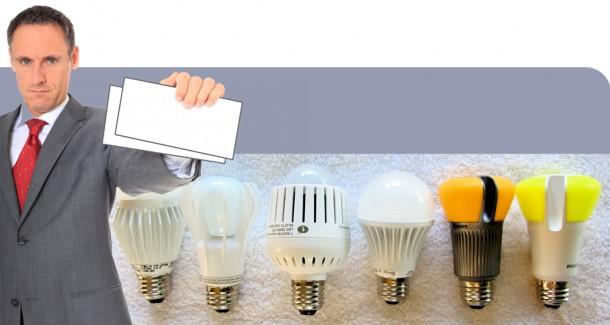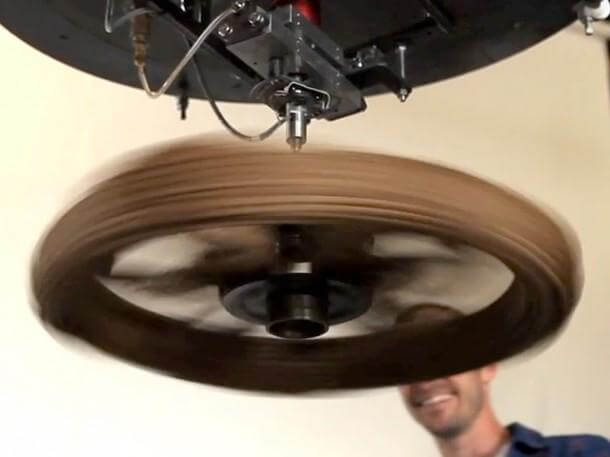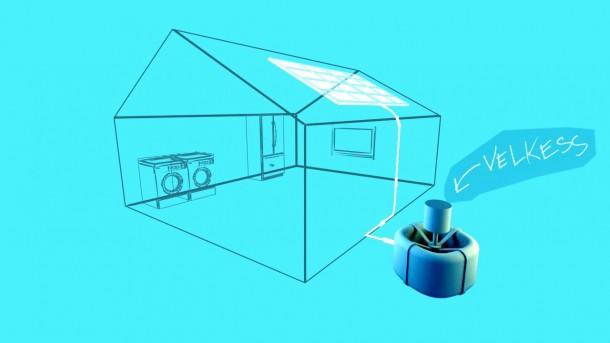 Energy crisis has made inventor Bill Gray to come up with an innovative flywheel design to replace lead batteries that are not only toxic and explosive but also lose their capacity after a certain number of cycles. They they are also non-renewable. His invention is called Velkess- Very Large Kinetic Energy Storage System.
Energy crisis has made inventor Bill Gray to come up with an innovative flywheel design to replace lead batteries that are not only toxic and explosive but also lose their capacity after a certain number of cycles. They they are also non-renewable. His invention is called Velkess- Very Large Kinetic Energy Storage System.
This invention uses super elastic materials to re-transmit the non-coherent mechanical forces and unnecessary vibrations by working with the usual rotor dynamics, and reduces the wobble existing in the current design of flywheels. This not only gives good control on the rotor system but as a result of this, lesser precision is required in their manufacture making it least expensive.
Air resistance and friction in the normal flywheels results in loss of energy. Velkess on the other hand works in a vacuum-sealed compartment having magnetic bearings that diminish friction and drag caused by wind, meaning greater efficiency. This is good on cost as well as environment being made from recyclable and nontoxic materials.
 Velkess maker, Gary claims that it has the ability to last three to five times longer; be twice as efficient as the regular batteries and also is half on the cost per kWh. The present prototype carries up to 2 kW and stores 0.5kWh; it is estimated to reach 15kWh real soon. Gary says, “The magnets to float 25 lbs are easy to get on the internet and easy to work with by hand. Magnets strong enough to float 750 lbs are a different story. They need to be custom made and are too powerful to safely work by hand.”
Velkess maker, Gary claims that it has the ability to last three to five times longer; be twice as efficient as the regular batteries and also is half on the cost per kWh. The present prototype carries up to 2 kW and stores 0.5kWh; it is estimated to reach 15kWh real soon. Gary says, “The magnets to float 25 lbs are easy to get on the internet and easy to work with by hand. Magnets strong enough to float 750 lbs are a different story. They need to be custom made and are too powerful to safely work by hand.”
 Such a flywheel can be used in electric vehicles by transforming the cars mechanical energy into electrical forms by using regenerative braking, and can be connected in parallel to enhance storage capacity. Generally this is done to recharge the car’s battery since the charge comes in high intensity impulses that the batteries cannot absorb quickly and the flywheel is a great addition here. It is also great for speedy acceleration that also works on the same phenomena. Such flywheels and super-capacitors are not to replace batteries any time soon, yet they can play a significant role in providing quick energy bursts when desired. They can be called the energy store houses of the future.
Such a flywheel can be used in electric vehicles by transforming the cars mechanical energy into electrical forms by using regenerative braking, and can be connected in parallel to enhance storage capacity. Generally this is done to recharge the car’s battery since the charge comes in high intensity impulses that the batteries cannot absorb quickly and the flywheel is a great addition here. It is also great for speedy acceleration that also works on the same phenomena. Such flywheels and super-capacitors are not to replace batteries any time soon, yet they can play a significant role in providing quick energy bursts when desired. They can be called the energy store houses of the future.
Let’s just hope such inventions keep on coming and provide safe and environmental friendly solutions to the world’s energy problems.


